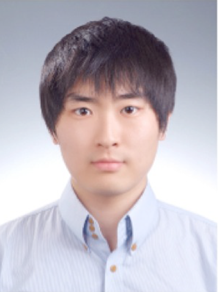SEMINAR
The State Key Lab of
High Performance Ceramics and Superfine Microstructure
Shanghai Institute of Ceramics, Chinese Academy of Sciences
中 国 科 学 院 上 海 硅 酸 盐 研 究 所 高 性 能 陶 瓷 和 超 微 结 构 国 家 重 点 实 验 室
 |
Carbon Allotropes in Perovskite Solar Cells
IL Jeon
University of Tokyo
时间:2018年4月17日(星期二)9:30
地点:长宁园区4号楼14楼第一会议室
欢迎广大科研人员和研究生参与讨论!
联系人:黄富强(52411620)
报告摘要:
Global warming and energy crisis have prompted the society to look towards pollution-free and infinite renewable energy sources. As a result, there has been remarkable progress in perovskite solar cell (PSC) research. While there has been a strenuous efficiency race within the solar cell community, less attention has been paid to other important fortes, such as flexibility, scalability, and eco-friendliness. These advantages can be enhanced by focusing on the electrode and charge selective layers of the photovoltaic devices. There are two research projects that I would like to introduce in this talk: One is the replacement of the conventional transparent conductor, indium tin oxide (ITO) by using two different types of carbon allotropes, graphene and carbon nanotubes (CNTs). Another is the application of fullerene chemistry as a solution to the stability of PSCs. Graphene and Carbon Nanotubes. Until now, our group has successfully demonstrated ITO replacement by using CNTs and graphene in thin-film solar cells, enabling flexible application and low-cost process. However, which carbon electrode is better CNT or graphene has never been investigated. In this work, we compared and contrasted the two mainstream carbon transparent electrodes in perovskite solar cells. Fullerene. Lithium-ion containing endohedral fullerene (Li+@C60) was used as a dopant in PSCs and found to be instantly oxidising spiro-MeOTAD without the need for oxygen nor light, as well as functioning as an anti-oxidant after being reduced. We achieved 10-fold stability enhancement in PSCs without encapsulation.
报告人简介:
 Dr. Il Jeon had his Bachelor and Master degrees in the University of Oxford, UK. He continued working as a senior researcher in LG Display Co. Ltd., South Korea for 5 years, mainly focused on the optical films and quantum rod display devices. He got the PhD degree in Chemistry at the University of Tokyo, Japan, in 2016. Following with one year of the JSPS postdoctoral fellowship, he is now a lecturer in the University of Tokyo and working on the development of carbon allotropes and their optoelectronic applications.
Dr. Il Jeon had his Bachelor and Master degrees in the University of Oxford, UK. He continued working as a senior researcher in LG Display Co. Ltd., South Korea for 5 years, mainly focused on the optical films and quantum rod display devices. He got the PhD degree in Chemistry at the University of Tokyo, Japan, in 2016. Following with one year of the JSPS postdoctoral fellowship, he is now a lecturer in the University of Tokyo and working on the development of carbon allotropes and their optoelectronic applications.


 当前位置:
当前位置:

